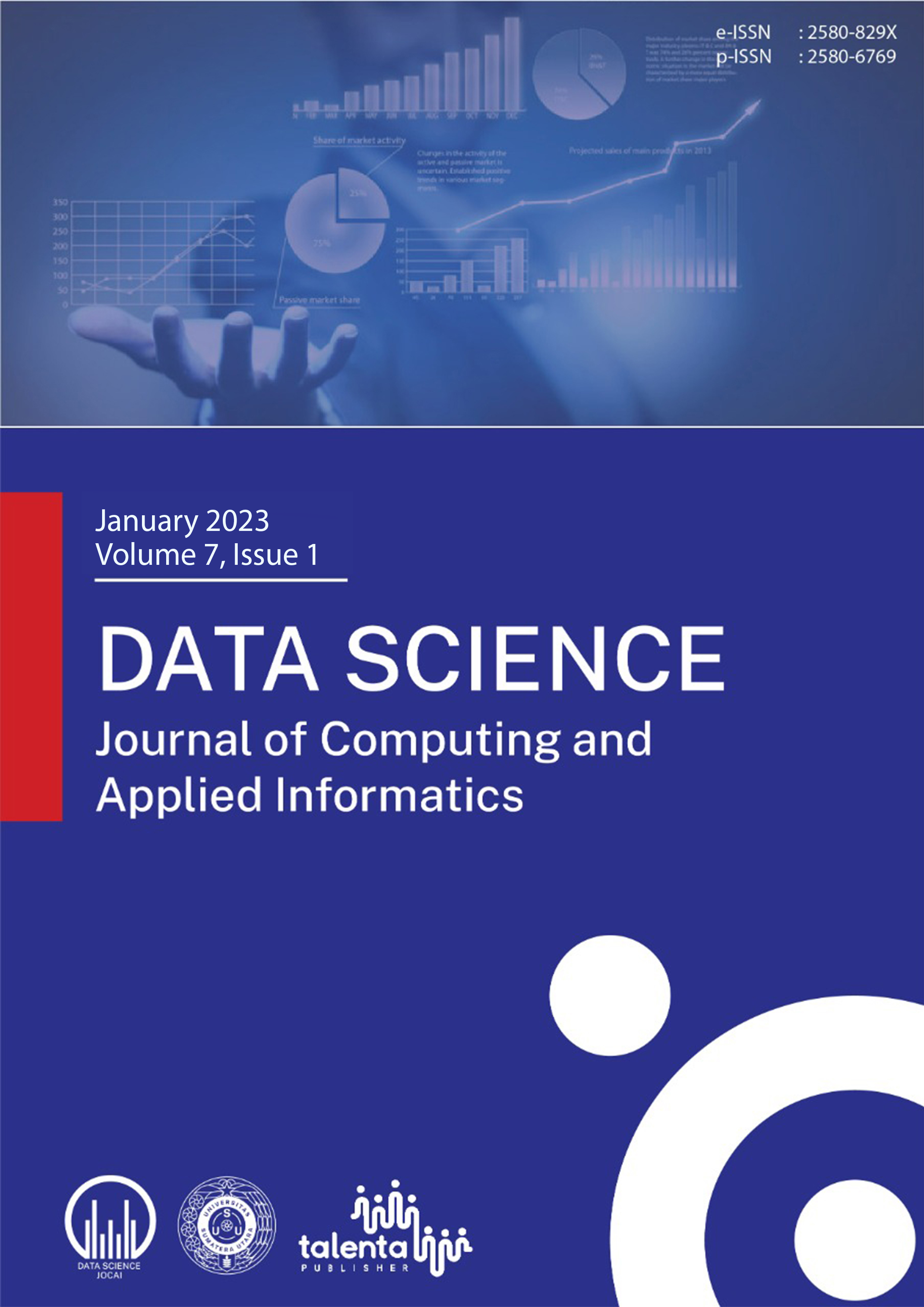Comparative Analysis of Ciphertext Enlargement on Generalization of the ElGamal and Multi-factor RSA
DOI:
https://doi.org/10.32734/jocai.v7.i1-10360Keywords:
Generalization of the ElGamal, Multi-factor RSA, Cryptography, Ciphertext ComparisonAbstract
Information and communication security has become more crucial and has become a new problem in relation to security, accessibility, data management, and other information policy challenges as a result of how easy it is for all users to use communication media. One of the fields of science that has a technique or art for disguising the data sent by the sender to the recipient with the aim of maintaining the confidentiality of the data is called cryptography. In determining better cryptographic algorithms for data security systems, in addition to considering strength, key length and ciphertext enlargement are also important factors to consider. Therefore, in this study, we attempted to compare the ciphertext magnification of the generalization of the ElGamal and multi-factor RSA algorithms by utilizing the same key length. Generalization of the ElGamal and Multi-factor RSA are both asymmetric algorithms that have public and private key pairs for encryption and decryption. However, at the level of security, the RSA algorithm is based on the difficulty of finding large integer factors into two prime factors. In contrast to the ElGamal algorithm, security is based on the difficulty of calculating the discrete logarithm of a large prime modulus. The results of the comparison algorithm carried out are represented in the form of a table containing the plaintext, key length, and size of the data.
Downloads
References
J. C. Bertot, P. T. Jaeger, And D. Hansen, “The Impact Of Polices On Government Social Media Usage: Issues, Challenges, And Recommendations,†Gov. Inf. Q., Vol. 29, No. 1, Pp. 30–40, 2012, Doi: 10.1016/J.Giq.2011.04.004.
S. Goel, K. Williams, And E. Dincelli, “Got Phished? Internet Security And Human Vulnerability,†J. Assoc. Inf. Syst., Vol. 18, No. 1, Pp. 22–44, 2017, Doi: 10.17705/1jais.00447.
Z. Zhang And B. B. Gupta, “Social Media Security And Trustworthiness: Overview And New Direction,†Futur. Gener. Comput. Syst., Vol. 86, Pp. 914–925, 2018, Doi: 10.1016/J.Future.2016.10.007.
M. A. Budiman, P. Sihombing, And I. A. Fikri, “A Cryptocompression System With Multi-Factor Rsa Algorithm And Levenstein Code Algorithm,†J. Phys. Conf. Ser., Vol. 1898, No. 1, 2021, Doi: 10.1088/1742-6596/1898/1/012040.
R. Ranasinghe And P. Athukorala, “A Generalization Of The Elgamal Public-Key Cryptosystem,†J. Discret. Math. Sci. Cryptogr., No. May 2021, Doi: 10.1080/09720529.2020.1857902.
D. Boneh And H. Shacham, “Fast Variants Of Rsa,†Cryptobytes, Vol. 5, Pp. 1–10, 2002, [Online]. Available: Http://Citeseerx.Ist.Psu.Edu/Viewdoc/Download?Doi=10.1.1.83.7319&Rep=Rep1&Type=Pdf.
Downloads
Published
How to Cite
Issue
Section
License
Copyright (c) 2023 Data Science: Journal of Computing and Applied Informatics

This work is licensed under a Creative Commons Attribution-ShareAlike 4.0 International License.















